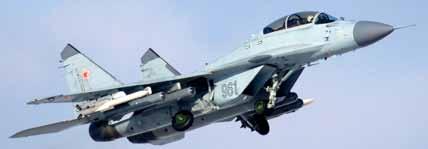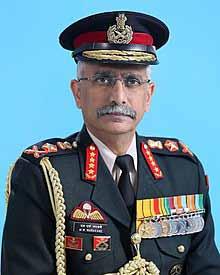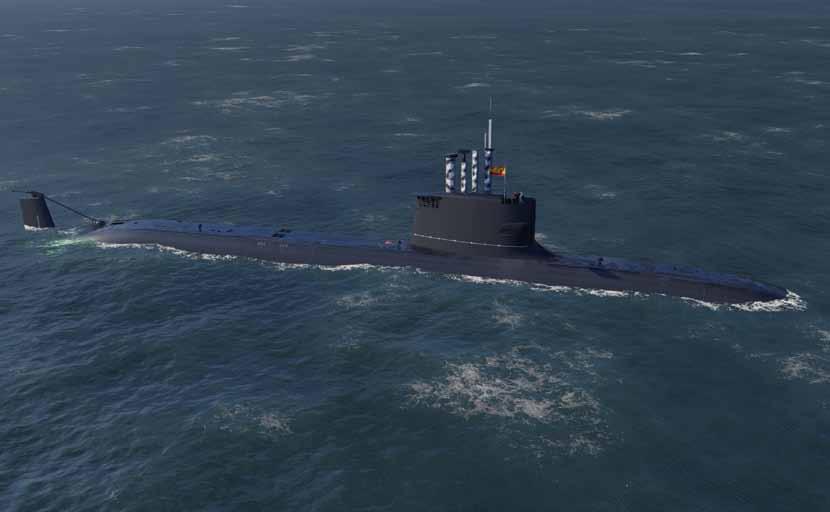
15 minute read
Navantia, a reliable partner for ‘Make in India’ projects
Navantia, the Spanish naval shipbuilder, designs and builds all the naval units for the Spanish Navy and is present in many international tenders with proposals based on well-proven designs. Navantia has developed a business model based in a continuous innovation and flexibility towards the customer, under different kinds of contracts including ToT.
Navantia’s experience in ToT programs is quite ample. At present, ToT is successfully being carried-out in three countries, involving local construction of destroyers in Australia, one LHD in Turkey, and the implementation of an indigenous combat system for corvettes in Saudi Arabia developed by a Joint Venture created between Navantia and SAMI (Saudi Arabia Military Systems).
Advertisement
India is a strategic market for Navantia and has a delegation in Delhi.
Navantia first entered India more than 15 years ago, when the company participated in the design and transfer of technology to India’s of six Kalvari class submarines being built in MDL (Mumbai), deploying a resident team in India between 2006 and 2013. Some years later, teaming with Larsen & Toubro Defence, Navantia participated in the LPDs tender, as a result of which the Indian Navy had the opportunity to host the Spanish Navy LHD Juan Carlos I in Mumbai in 2017.
Currently, Navantia is participating in the P75(I) project, offering a design based on the Spanish Navy S80 Plus submarine, and proposes to provide the required “Know How” and “Know Why” through a Technology Transfer program to achieve permanent design, construction and maintenance capabilities in India.
Navantia is fully committed with the Make in India philosophy, having gone itself through a similar experience over the last decades, evolving from fabricator only using foreign designs, to a turn key supplier able to go through all design, build, commission and life cycle support phases, positioning Navantia to assist other navies and international shipbuilders with a wide range of Transfer of Technology solutions.

Although the Indian armed forces have the fiery spirit for winning wars, yet a conventional deterrence value is essential while facing a dual threat along its borders. Depleted Force Levels is indeed not a situation we should continue to be in for a prolonged period. Hence, IAF needs to fill the gap with additional numbers as, it is said ‘Quantity has a quality of its own!’ Diplomacy is of high priority for mending relationships, yet firm diplomacy can succeed more effectively when backed by a robust military capability. It is therefore in the overall interests of the nation that air power, being the ‘weapon of first choice’ during conflict, is maintained at a level which deters our adversaries to initiate any aggressive action, says Air Marshal Ajit Bhavnani, PVSM, AVSM, VM(G), (Retd) The author, who is Former Vice Chief of Air Staff & Founder Member – Society for Aerospace, Maritime and Defence Studies (SAMDeS), writes about the urgency in adding to the airpower of India in the background of Indo-China and Indo-Pak standoffs along the borders.
The current stand-off in Eastern Ladakh between Indian and Chinese forces is a "unilateral and provocative" action by China to change the status quo on the Line of Actual Control (LAC). While Indian forces have responded firmly to thwart this aggressive land grab action, it reflects China’s enduring belligerent and aggressive designs, given that such an unwarranted offensive action has occurred at a time when the entire world is grappling with the COVID pandemic.
Expectedly, China’s foreign office spokesman Zhao Lijian has blamed India for the ongoing border stand-off and added, "First I want to make it clear that China does not recognise the Ladakh Union Territory illegally set up by the Indian side and also Arunachal”.
At the same time, China openly supports Pakistan’s stand on Kashmir. Recent intelligence reports also indicate China’s infra build up on the border with Arunachal and Sikkim. Additionally, Pakistan continues its relentless designs to destabilise Kashmir.
On 01 January 2021, in accordance with a new law, Chairman of China’s Military Commission, Xi Jinping was given full powers to mobilize military and civilian assets to defend national interests both within China and abroad. According to a recent CNN report, Xi Jinping has called on troops to "put all their minds and energy on preparing for war".
During the month of December 2020, air forces of Pakistan and China conducted a three-week long joint combat exercise - Shaheen-IX - at an air base in Pakistan. Speaking at the inaugural, PAF’s Deputy Chief of
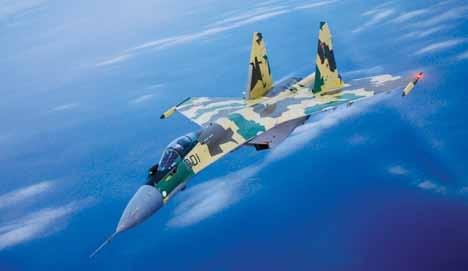


Air Staff Operations emphasized the “increased level of combat training” and added, the exercise was “designed to deepen cooperation and enhance interoperability of both Air Forces, thereby fortifying the brotherly relations between our two countries”.
We need not read too far between the lines to be convinced that the stated emphasis on “enhanced Interoperability” as being the primary objective for “increased level of combat training”, underlines the motive for the exercise as being a prelude to collusive plans for a coordinated future conflict with India.
Ample signals have been provided to conclusively assess that joint action by China and Pakistan could transpire in the event of conflict with India, which may occur sooner at any point of time, given the record of the two belligerent nations. India therefore needs to take a very serious note of genuine calls by successive Service Chiefs on the challenging security situation considering that a twofront war has now become more of a reality than ever before.
In the current global battle scenario, Land and Naval forces would continue to play a predominant role and are moving forward providing greater destructive power with higher mobility.
No matter whether the action is on land or at sea, Air Power is an inescapable element in the successful design of battle. Air Power is a force multiplier and provides a quantum leap in capability with innovative utilization of modern weapon systems delivering long range, high precision targeting with high kill probability.
In the recent past, conflicts have shown air power providing unique capabilities, thus giving the advantage needed at the outset of conflict. Lt Gen Dave Deptula, Retd, (USAF), Dean of Mitchell Institute puts it aptly “Precision and speed create mass of their own. Airpower can now help ‘control’ an adversary instead of simply destroying fielded forces or support an army”.
Therefore, effective use of air power with swift and intensive lethal action can provide the military advantage for creating favourable outcomes in conflict.
We can gauge the “shock and awe
effect” of air power by the manner in which IAF achieved total surprise during the night air strike over Balakot in February 2019. IAF’s success of the air strike was evident by the manner in which it completely jolted the Pakistani leadership, who called for immediate revenge. The fact that their riposte with PAF air strike targeting Indian Army ground targets went nowhere is another story!
The Indian Air Force has a Government sanction for 42 combat squadrons. Since 2002, IAF has been gradually phasing out its legacy MiG series jets. In this process, the number of squadrons has sharply declined to an undesirably low figure of 30. On the other hand, accretions have been slow and IAF’s current strength of combat squadrons is the lowest in the past few decades and continues to shrink. Phasing out of remaining legacy MiG squadrons, including all Bison units, will further impact on the low strength. With two Rafale and one MiG 29 units being
added, the count by 2025 is expected to be 27-28 squadrons. This is where the crunch lies, as these numbers are well short of the approved force levels. More importantly, IAF is facing low numbers at a time when the likelihood of a two-front war has increased significantly. Our two adversaries have made collusive threats, with China stepping up claims on Ladakh and Arunachal, and Pakistan’s incessant calls to destabilize Kashmir, growing louder.
At this point we need to squarely face the reality of the significant shortage
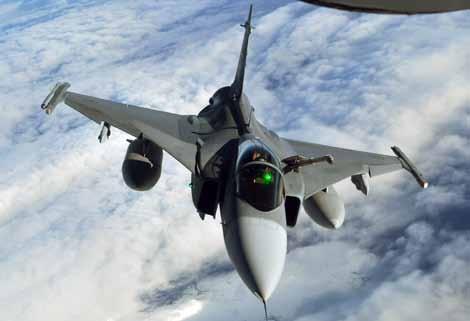
in IAF’s numbers. Can we bridge the gap of up to 15 squadrons by 2030? Some would argue against the need for maintaining a fleet of 42 squadrons, when multirole jets, such as Rafales, with wide ranging capabilities and at high cost are being inducted. Can the nation afford these in larger numbers when facing an economic crunch? But then, what are the options available?
Diplomacy can certainly ease rough edges between nations, provided it is exercised from a position of strength. Firm diplomacy can resolve issues far more effectively backed by a robust military capability that can ‘walk the talk’. In the current scenario, India has worked through diplomacy and yet our two adversaries continue to remain belligerent. If pursuing diplomacy is a means to resolve disputes, it should certainly continue to be pursued. Yet if that option does not succeed, then war may be thrust on us. Hence, it
would be wise for India to be well prepared for such an eventuality.
Depleted Force Levels is indeed not a situation we should continue to be in for a prolonged period. The need for numbers with a mix of quantity and quality are the essence for providing deterrence, which ultimately deters the enemy from waging war. Although the Indian armed forces have the fiery spirit for winning wars, yet a conventional deterrence value is essential while facing a dual threat. Hence, IAF needs to fill the gap with additional numbers as, it is said “Quantity has a quality of its own”!
PAF currently has 23-24 combat squadrons with a mix of upgraded F16s, JF17s, Mirage3/5s and Chinese F7s. It is reliably learnt that the Chinese will soon beef up these numbers with latest fifth gen J-20 fighters for PAF. China and Pakistan may have allegedly entered a “secret deal” to expand military cooperation and the possibility of Pak-Chinese collaboration for a fifth-gen fighter cannot be discounted in the mid-term.
Currently, China is the only nation fielding two new and modern fifth gen fighters- J-20 in service, and next
version with higher tech systems- J-31, soon to enter service. PLA Air Force is almost at par with USAF in terms of advanced systems, and in large numbers.
These are firm indicators of how our adversaries are both taking decisive measures to bolster air power capabilities. Their hostile approach remains unchanged. India needs to take firm and active steps soon, to maintain a desired level of deterrence.
On a favourable note, India’s current leadership is known for its firmness in maintaining a robust national security apparatus. Considering this distinctive trait, there is sufficient hope that measures are adopted to narrow the gap in numbers of IAF combat squadrons. The current economic challenges facing our government are indeed of a critical nature. Distribution of finances has to be balanced between development and national security. Yet a strong high tech military would be a major step towards thwarting the contentious designs of our adversaries. Indeed it is time to cut short timelines in our procurement procedures and also restore the defence budget to at least 2 % of GDP.
Taking a pragmatic view, the IAF has tacitly admitted it would be feasible to increase combat strength to 36 squadrons by 2030. Approval for 83 Tejas 1-A jets is indeed a step in the right direction. However, more longterm decisions could be taken at this juncture to ensure IAF force levels are not breached from figures which could be too harsh to recover from.
The 114 Multi Role Fighter Aircraft (MRFA program), for which a RFI was issued in 2017, is indeed a crucial requirement for the IAF. Air Chief Marshal RKS Bhadauria, has stated “procurement of 114 MRFA will be under Make in India plan.” The RFI has been issued and we are currently evaluating the response received and the way ahead.”
Advanced Medium Combat Aircraft (AMCA)
IAF has gone ahead and is looking keenly at ADA/HAL development programs of Tejas and AMCA. At this early stage, we can be hopeful of timely operational realization of these platforms. This is indeed critical, given that our adversaries are known to be brisk and aggressive on such projects. The Chinese have inducted the 5th Gen J-20 in large numbers and soon, J-31s will enter operational service. It can be conclusively stated, it is only a matter of
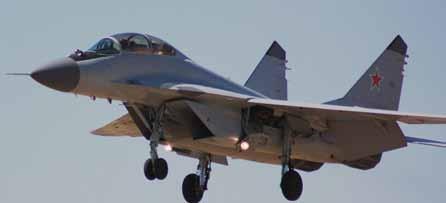

a short time, that PAF will be inducting a 5th Gen aircraft, a key augmentation to its air power. This factor needs to be given a serious consideration and IAF should take adequate steps to ensure AMCA is operationalised in a definitive time frame.
Hence, looking a few years ahead, the most critical development program for the IAF is the 5th generation AMCA. Reports indicate, ADA/HAL is moving fast on this project. Indeed, this is a challenging task with several complex sub systems of advanced technology to be developed indigenously. More importantly, it is vital for IAF to induct AMCA within specified timelines to mitigate operational challenges posed by the decisive bolstering of air power by Pakistan and China.
Keeping in view the far-reaching imperatives for advancing IAF’s war fighting potential, a pragmatic approach would be in our best interests. Towards developing and operationlizing a homegrown fifth-gen aircraft and meeting the timely needs of the IAF, it would be useful to include a collaborative partner who can provide some of the cuttingedge technologies as well as contribute with a slice of the financials. Such an option would benefit significantly in advancing IAF capability with most advanced technology systems which would consequently herald a new era in Indian aerospace industry.
114 MRFA Program
The global tender for 114 MRFA jets should be vigorously pursued in a time bound manner. With retirement of a large number of light weight MiG fighters and additional fighters in the next ten years, the IAF would be justified in looking for replacements with newer 4.5+ gen jets in the Make in India mode.
MRFA program would be in addition to the 83 Tejas 1A jets recently approved by thr government. It is important to underline that MRFA program would not in any way hamper the indigenous Tejas project, as numbers of light weight jets required are substantial. Moreover, a large Make in India program as conceived by the MRFA project would result in considerable benefits in terms of hefty job creation with significant gains in skill levels and injection of cutting-edge technologies for high growth of India’s aerospace industry.
Rafale Jets
Induction of 36 state-of-the-art Rafale jets has begun. More Rafales should be inducted, as extensive infrastructure and hi-tech training facilities have been set up and additional jets would come at a more affordable price through the well-established G-G route.
Su 30 Fleet
It is heartening to note that IAF’s fleet of 272 Su 30 MKIs are in the process of being upgraded with modern weapon systems and electronics. This is indeed a crucial step initiated by the IAF and would consequently add significant muscle to elevate the fleet to the next level of modern technology.
India’s Drone Power
The recent Armenia-Azerbaijan clashes have once again underlined the efficacy of armed drones in conflict and how such UAVs can play a decisive role in success during conflict. Air Chief Marshal RKS Bhadauria has said “drones are an important part for surveillance and intelligence gathering. Their role in the build-up to a conflict is very important. Israel remains the leading supplier of surveillance drones to India and we are planning on procuring more Heron surveillance drones, while planning to arm around 90 already in service”.
With IAF combat aircraft fleet declining at an undesirable rate, induction of armed drones can be a key step for beefing up combat capability.
At this stage it is necessary to mention that while China possesses a large fleet of armed drones, Pakistan too has not delayed the addition of such drones into its arsenal. In December 2020, China’s state media publicised its decision to supply 50 Wing Loong II armed drones to Pakistan, which it prophesied in its usual provocative manner, “this would be a nightmare for Indian ground formations in high-altitude areas, as India’s military does not have the ability to respond to these new-age stand-off weapons”. Suffice it to state, we are fully aware of China’s usual deception techniques, although it is understood that armed UAVs play a decisive role in the current warfare scenario. India should be consistent in upgrading its UAV fleet and procuring several more advanced technology drone systems on offer by friendly nations.
IAF’s force levvel depletion is a subject of deep concern and as explained, the nation’s security challenges have only heightened in recent years. National leadership would indeed need to grapple in going forward with a balanced approach to recover the economy as well as strengthen nation’s security framework.
A nation’s neighbours remain static on ground and and stay in place. It is relationships between neighbours which are the dynamic factor. China and Pakistan, our two immediate neighbours have, since independence remained hostile, being inherently despondent with territory under their control. For these reasons, both have unabatedly tried to change status quo at the borders through use of force. Diplomacy is the art of succeeding during negotiations and our current policy makers have steered our relationships with tact and sensitivity. Yet firm diplomacy can succeed more effectively when backed by a robust military capability. It is therefore in the overall interests of the nation that air power, being the “weapon of first choice”, is maintained at a level which deters our adversaries to initiate any aggressive action.
Giving due consideration to bolstering military strength, with air power in particular, would consequently create a favourable geo- political environment conducive to the nation’s economic growth and overall development.
